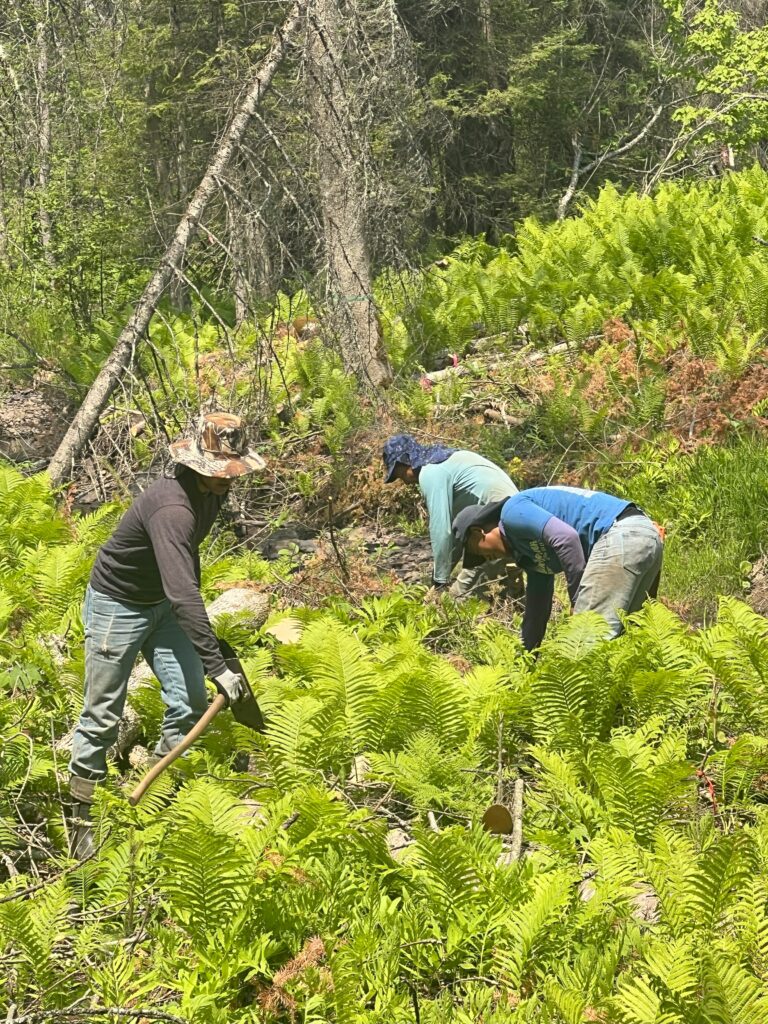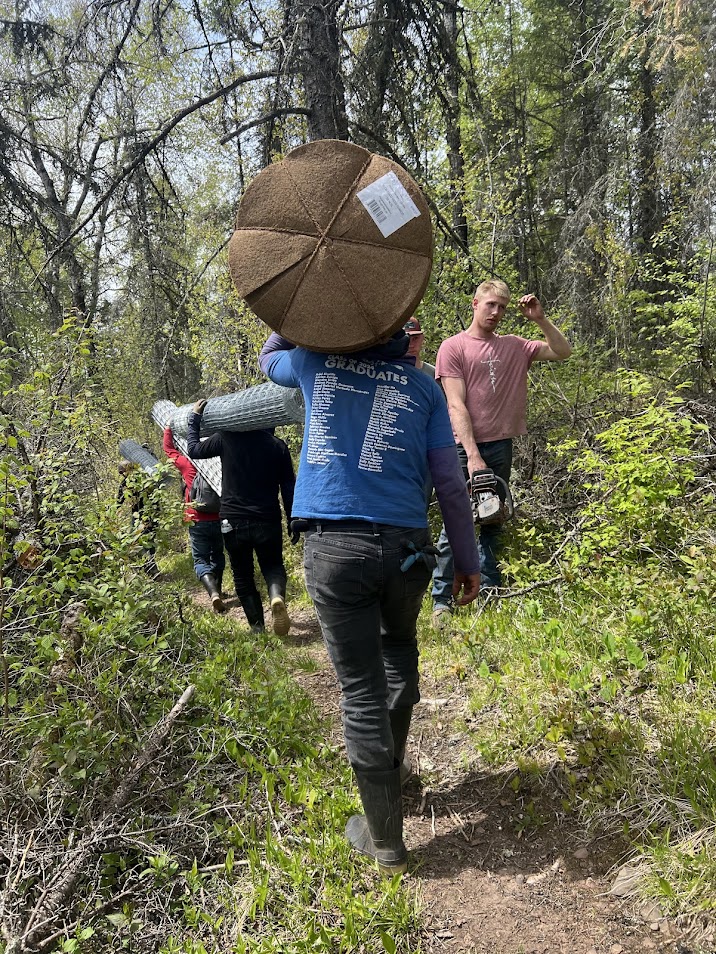Trees for Trout: An Update on MNTU’s Riparian Reforestation Project

If you’ve fished along a trout stream in northeast Minnesota lately, you’ve probably noticed the standing dead spruce and balsam fir, open gaps in the forest canopy, and more brush than you’d expect in what used to be shaded, coniferous woods. It’s not just about aesthetics – it’s a coldwater crisis in the making.
Minnesota Trout Unlimited has been working on the ground since March this spring with riparian forest restoration that’s all about fish – but by way of trees! The project continues in the Sucker, French and Lester River watersheds, where we’re clearing gaps in stands of dead and dying spruce and balsam along the rivers and planting native tree species (white spruce, white cedar, white pine, tamarack, sugar maple, and red oak. Last Friday, our crews finished planting nearly 5,000 trees in 240 riparian gaps. Caging will continue for the next week or so.
It’s hard work – clearing dead trees, hauling supplies (23,000 pounds of fencing alone), digging holes, and installing cages to protect saplings from browsing deer – but it’s worth it. Because in this part of the state, trout are forest products.
Forests Keep Trout Streams Cold and Clean
In northeast Minnesota, brook trout and steelhead streams weave through a landscape once dominated by deep-rooted conifers. These forests do more than set a beautiful backdrop – they filter runoff, store runoff and gradually release it as groundwater, stabilize streambanks, and provide critical shade.
That shade is no small thing. In the heat of summer, it can mean the difference between life and death for brook trout. As tree cover disappears -whether from aging stands, tree pests like spruce budworm, or fire – sunlight hits the streams, water warms, and the entire coldwater aquatic ecosystem feels the stress.
That’s why this project fills in canopy openings to restore the cooling effects of a healthy forest. It’s not clearcutting or blanket planting – it’s targeted, thoughtful work meant to help forests regenerate naturally, but faster and in mixed age stands.
Tackling More Than One Problem
This isn’t just about trout habitat. The forests of the North Shore have been hit hard in recent years by spruce budworm outbreaks, which kill off older balsam fir and spruce trees. These weakened forests are drier, patchier, and more vulnerable to wildfire.
Recent wildfires in northeast Minnesota are a warning that as our climate warms, droughts are getting longer and fires are getting harder to control. Healthy, diverse forests can act as a fire break and water sponge, but only if we help them recover before the next big spark. This project aims to reestablish healthy forests quickly.
By planting a mix of conifer and hardwood species, we’re not just supporting trout, we’re building more resilient forests that can better handle insect outbreaks, disease, and fire. Tamarack, red oak, and sugar maple add species and structural diversity. White pine and cedar restore historic components of the forest that are now in short supply.
This project required close coordination with MN DNR Fisheries staff and MNTU contracted with the Conservation Corps of Minnesota and private forestry service providers for the intensive hand labor required. It’s one of many steps we are taking to ensure the long-term health of northeast Minnesota’s trout streams.
If you’re out hiking this summer and spot young trees caged with mesh, especially in areas with lots of open ground and dead spruce or firs, you’re likely seeing our work in action. Those cages protect against deer, which love to munch on cedar and pine saplings. And while it might not look like much now, give it five to ten years: these trees will be the next generation of forest canopy.

